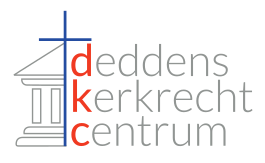In modern society, the interplay between climate control mechanisms and resource management has become increasingly significant. As populations grow and urban areas expand, the demand for comfortable living and working environments drives the development and implementation of various technologies.
These systems not only affect indoor conditions but also play a crucial role in shaping how natural resources are utilized. By examining the correlation between these installations and their broader implications on resource efficiency, one can gain insights into sustainable practices and responsible usage.
As industries seek to optimize their operations and households strive for comfort, a profound understanding of how climate regulation tools influence sustainability efforts is essential. Decisions made in this area can lead to both cost savings and a decrease in the environmental footprint, reflecting a commitment to better resource management.
Understanding Energy Use Patterns in HVAC Systems
Analyzing the performance metrics of climate control systems reveals crucial insights into their operational demands. Patterns of usage often oscillate with external conditions, influencing how resources are allocated during peak and off-peak periods.
Integration of sustainability initiatives profoundly alters how these systems function. By adopting advanced technologies, facilities can significantly diminish their carbon footprint. Monitoring tools provide real-time data, allowing for adjustments to be made instantly, thereby optimizing performance.
Efficiency ratings serve as benchmarks for assessing various units in operation. High-performance systems not only meet regulatory benchmarks but often exceed them, making them preferable choices for long-term investment. This proactive approach leads to substantial savings over time, enhancing budgetary oversight.
Resource management plays a pivotal role in minimizing waste linked to heating and cooling mechanisms. Implementing predictive maintenance schedules ensures that equipment functions at its peak without unnecessary energy drain. Collaborative efforts in understanding consumption trends empower stakeholders with knowledge to make informed decisions regarding future upgrades or replacements.
Comparing Energy Consumption: Different HVAC Technologies
Different cooling and heating systems can significantly vary in terms of resource management and efficiency ratings. Understanding these differences is key for homeowners and businesses aiming to reduce their energy bills. For instance, conventional systems typically operate at lower efficiency levels compared to modern technologies like variable refrigerant flow (VRF) systems, which adjust their output based on real-time demand, thereby optimizing usage.
Another example includes geothermal heat pumps, which leverage the earth’s stable temperatures for heating and cooling. These systems generally require a higher upfront investment but yield substantial long-term savings on utility costs due to their low operational expenses. In contrast, traditional air conditioning units, while less expensive initially, can lead to higher ongoing costs.
When examining energy performance, it’s also important to take into account the seasonal energy efficiency ratio (SEER) and heating seasonal performance factor (HSPF) ratings. Systems boasting higher SEER or HSPF ratings are engineered to operate more efficiently, translating to lower energy bills. Regular maintenance of any installed unit is crucial, as even minor issues can degrade performance and inflate energy usage.
The choice of technology impacts not just comfort levels but also contributes to environmental sustainability. By selecting advanced systems designed for optimal resource management, users can make strides in reducing their carbon footprint while enjoying improved temperature control in their spaces.
Strategies for Reducing Energy Costs in HVAC Operations
Implementing sustainability initiatives can significantly lower operational expenses associated with climate control systems. Regular maintenance is fundamental; ensuring that filters are clean and components are functioning optimally can prevent overworking the machinery. Routine check-ups not only enhance performance but also extend the life of the equipment, leading to decreased long-term costs.
Upgrading to systems with advanced efficiency ratings can yield considerable savings on energy bills. When replacing old units, it’s crucial to evaluate options that incorporate the latest technology, such as programmable thermostats and zoning systems. These features allow for precise control over temperatures in different areas, minimizing unnecessary heating or cooling.
Investing in energy management systems can provide real-time data, enabling better decision-making. Understanding consumption patterns assists in identifying peak usage times and implementing strategies to reduce demand during those periods. Employing demand response strategies can also lead to savings by adjusting usage during high-cost periods.
Finally, educating staff about energy conservation practices enhances team involvement in reducing costs. Simple changes, such as closing vents in unused rooms or adjusting thermostat settings based on occupancy, contribute to greater efficiency. For more detailed insights into optimizing climate control systems, visit https://mdairheatingandcooling.com/.
The Role of Smart Thermostats in Resource Management
Smart thermostats play a significant part in optimizing resource use and aligning with sustainability initiatives. By integrating advanced technology, these devices enhance temperature control and monitoring, adapting to user preferences and environmental changes.
Key features of smart thermostats include:
- Remote access via mobile applications, allowing users to adjust settings from anywhere.
- Learning algorithms that analyze user behavior to predict optimal heating and cooling schedules.
- Integration with home automation systems for synchronized operation with other smart devices.
An essential aspect of these devices is their ability to improve efficiency ratings of systems. They assist in reducing unnecessary operation during unoccupied periods, significantly lowering resource use. Real-time data collection enables users to make informed decisions about their consumption patterns.
Moreover, smart thermostats contribute to sustainability initiatives by:
- Providing insights into usage trends, helping users identify opportunities for improvement.
- Supporting demand response programs that adjust power use based on grid needs.
- Encouraging users to adopt eco-friendly habits, as they often come with energy-saving recommendations.
The long-term benefits of implementing smart thermostats include decreased operational costs and enhanced comfort in living spaces. As technology advances, continued adoption of these devices promises further advancements in resource management.
